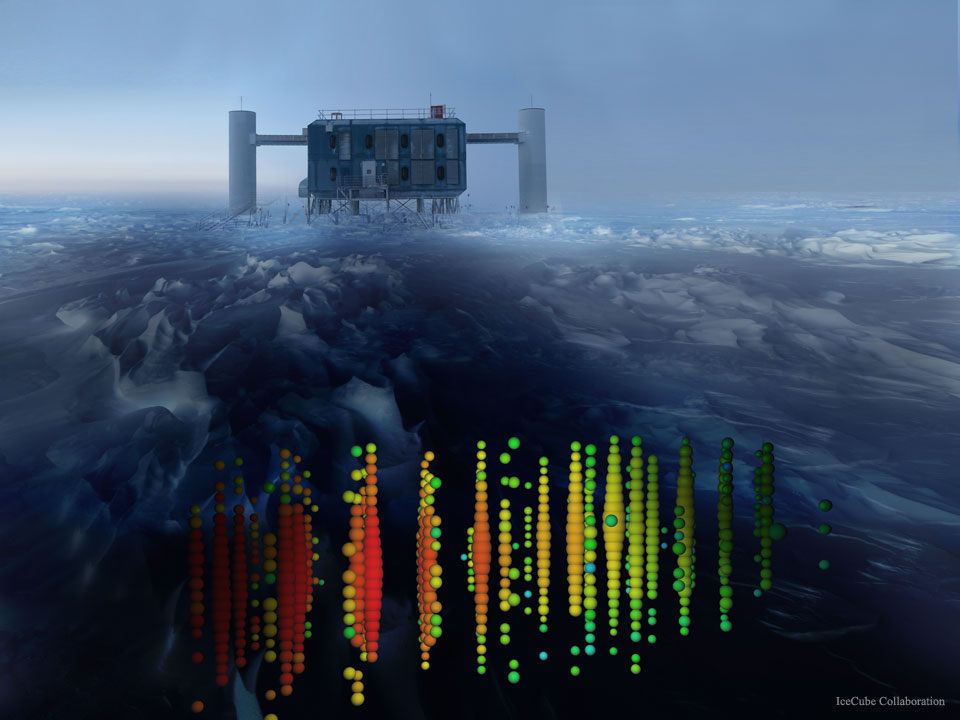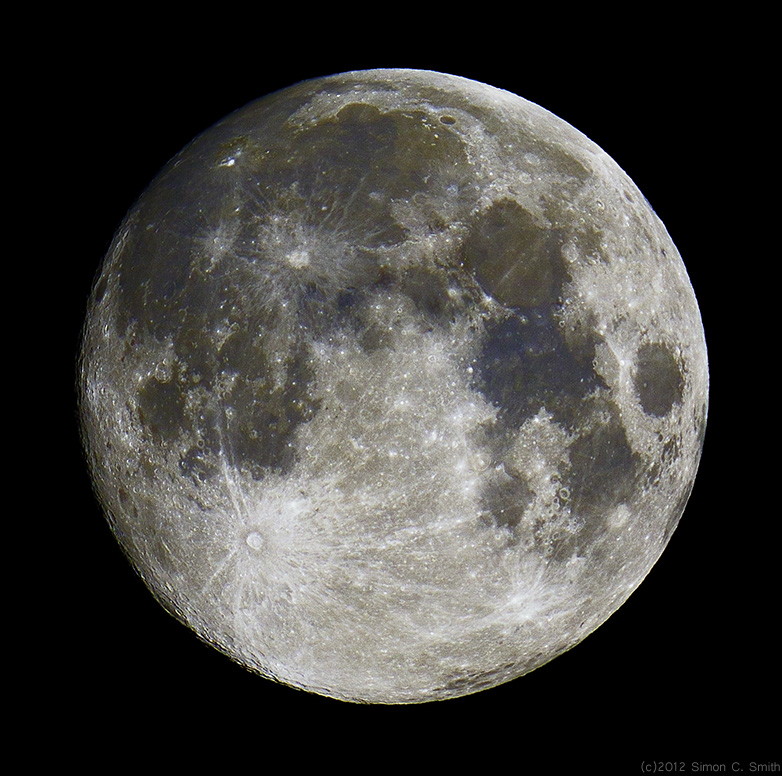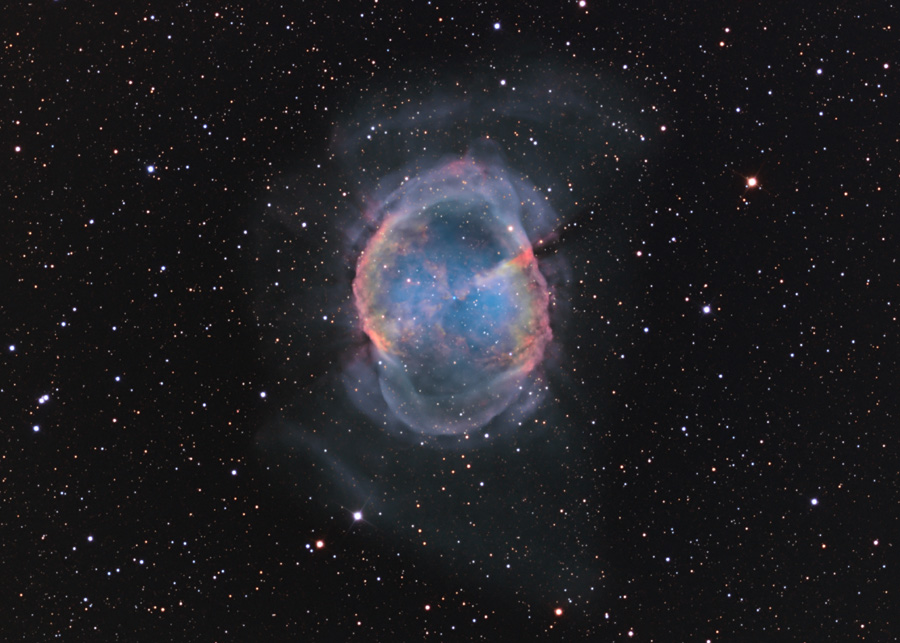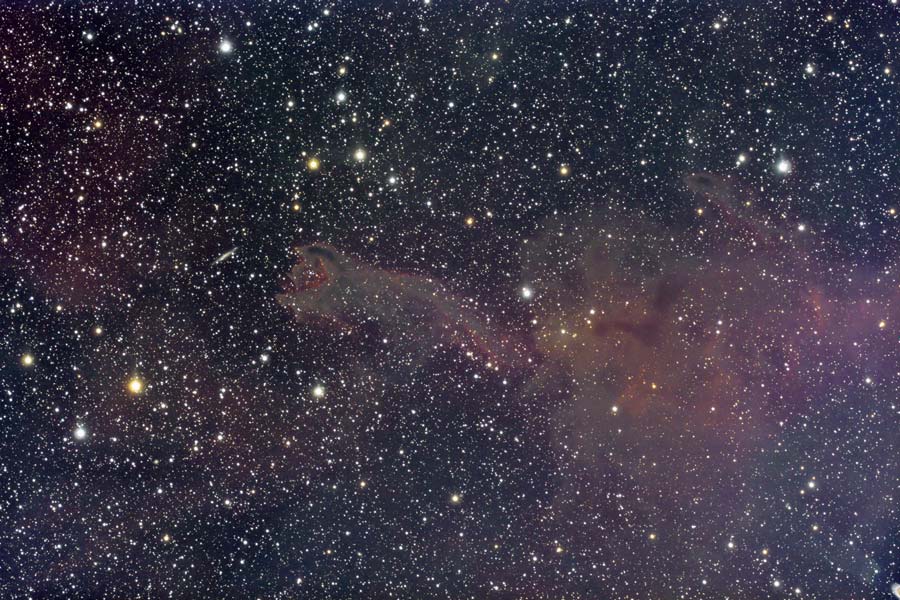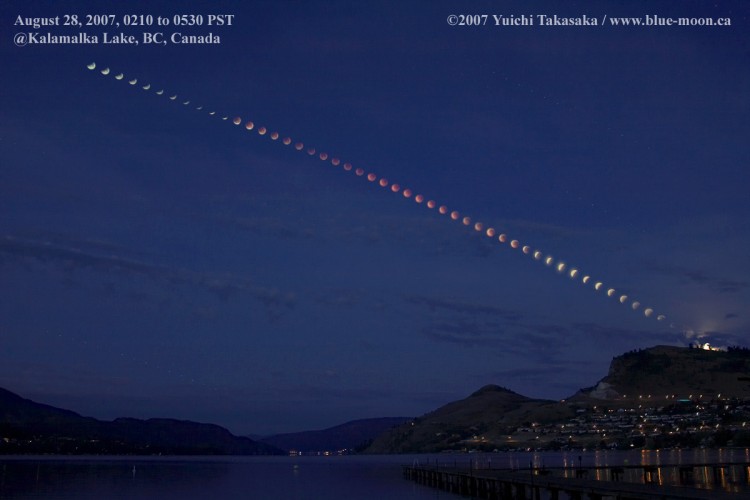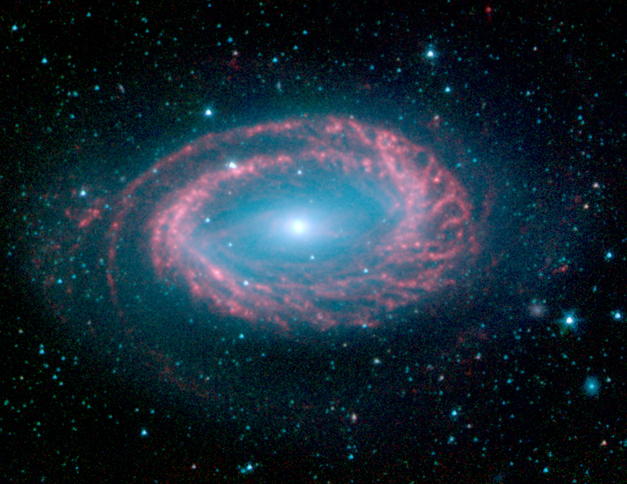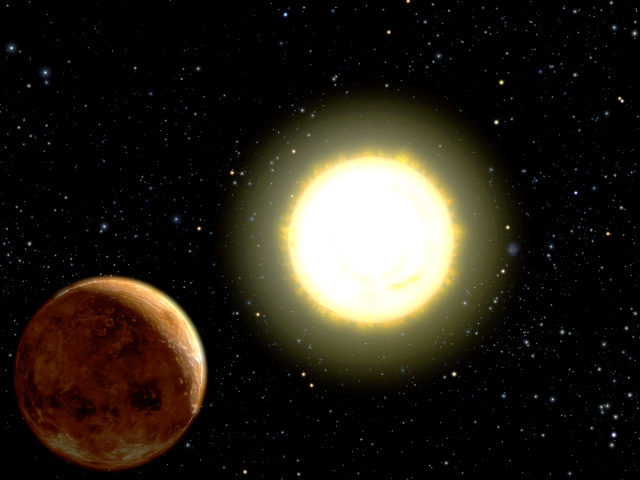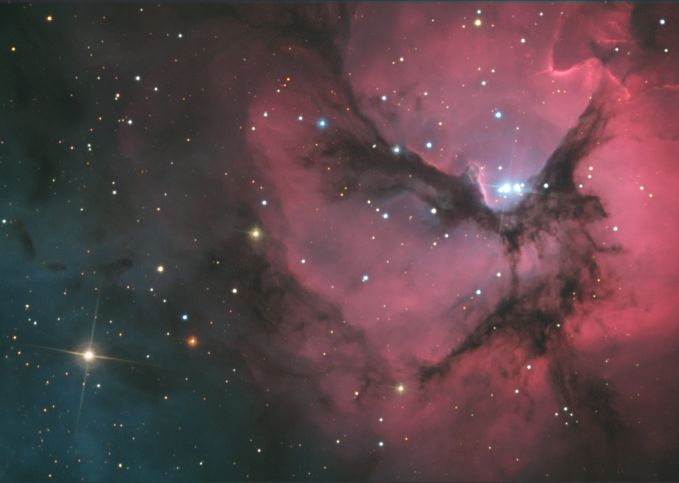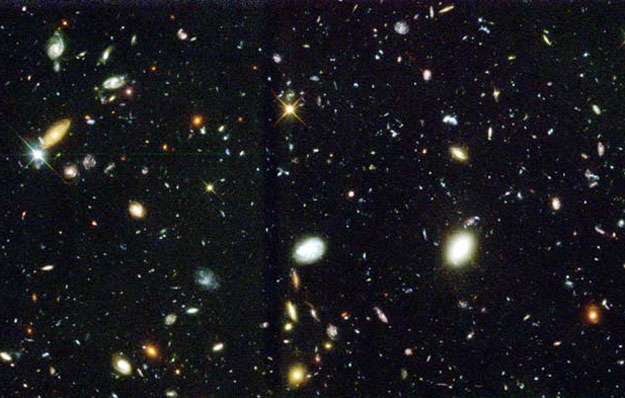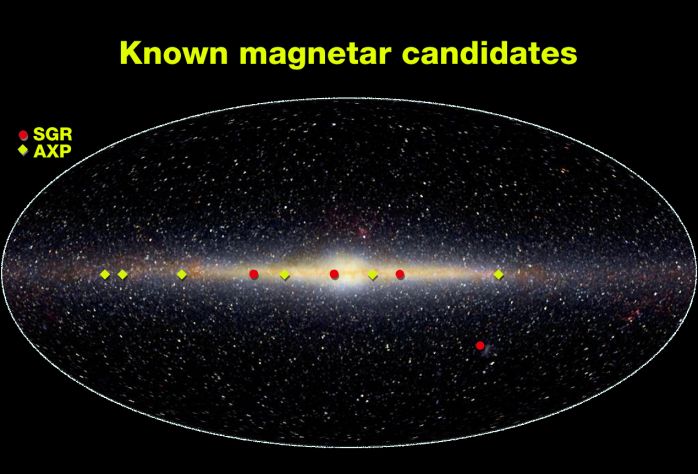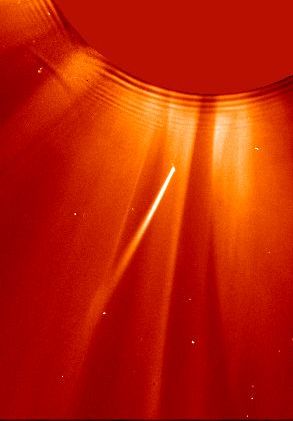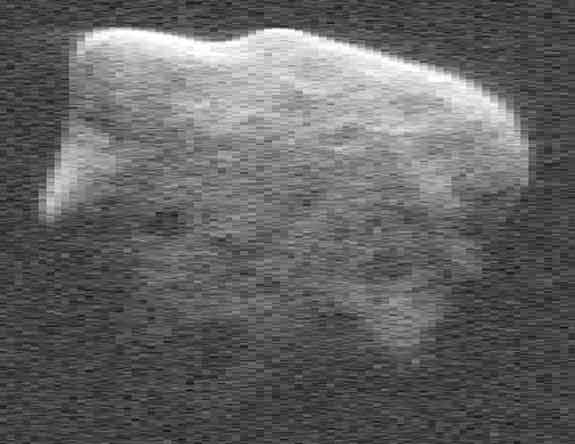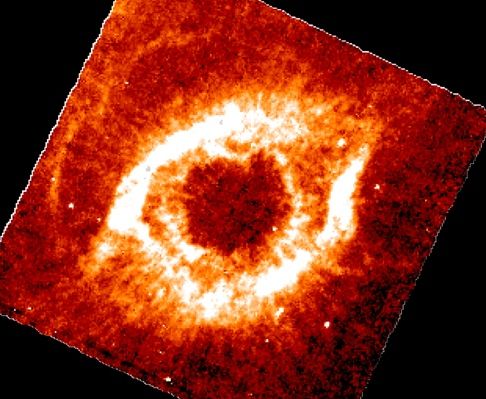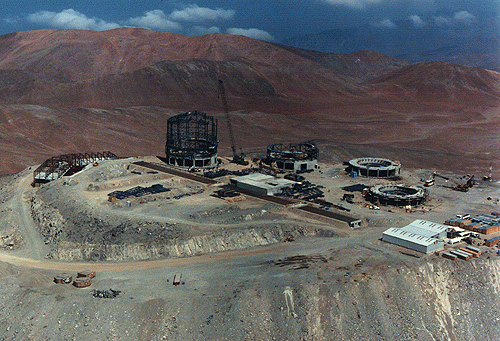| << Previous | Index | Next >> |
2015 From where do these neutrinos come? The IceCube Neutrino Observatory near the South Pole of the Earth has begun to detect nearly invisible particles of very high energy. Although these rarely-interacting neutrinos pass through much of the Earth just before being detected, where they started remains a mystery. Pictured here is IceCube's Antarctic lab accompanied by a cartoon depicting long strands of detectors frozen into the crystal clear ice below. Candidate origins for these cosmic neutrinos include the violent surroundings of supermassive black holes at the centers of distant galaxies, and tremendous stellar explosions culminating in supernovas and gamma ray bursts far across the universe. As IceCube detects increasingly more high energy neutrinos, correlations with known objects may resolve this cosmic conundrum -- or we may never know.
2014 Why would the sky look like a giant target? Airglow. Following a giant thunderstorm over Bangladesh in late April, giant circular ripples of glowing air appeared over Tibet, China, as pictured above. The unusual pattern is created by atmospheric gravity waves, waves of alternating air pressure that can grow with height as the air thins, in this case about 90 kilometers up. Unlike auroras powered by collisions with energetic charged particles and seen at high latitudes, airglow is due to chemiluminescence, the production of light in a chemical reaction. More typically seen near the horizon, airglow keeps the night sky from ever being completely dark.
2013 Sometimes, regions of planet Earth light up with fire. Since fire is the rapid acquisition of oxygen, and since oxygen is a key indicator of life, fire on any planet would be an indicator of life on that planet. Most of the Earth's land has been scorched by fire at some time in the past. Although causing many a tragedy, for many places on Earth fire is considered part of a natural ecosystem cycle. Large forest fires on Earth are usually caused by lightning and can be visible from orbit. Above, in the year 2000, stunned elk avoid a fire sweeping through Montana's Bitterroot Valley by standing in a river.
2012 Rising at sunset, the gorgeous Full Moon of August 31 became the second Full Moon in a month. According to modern reckoning, that makes it a Blue Moon. In fact, parts of the Full Moon do look a little blue in this sharp lunar portrait. Taken just hours before the exact full phase in delightfully clear skies over Nottingham, UK, it features eye-catching bright rays extending from the prominent young crater Tycho in the Moon's southern hemisphere. The slightly color enhanced image also brings out subtle shades of blue, a real characteristic of terrain with a high content of titanium oxide and iron. The blue lunar terrain on the right includes the dark flat expanse of the Sea of Tranquility and the Apollo 11 landing site.
2011 While hunting for comets in the skies above 18th century France, astronomer Charles Messier diligently kept a list of the things he encountered that were definitely not comets. This is number 27 on his now famous not-a-comet list. In fact, 21st century astronomers would identify it as a planetary nebula, but it's not a planet either, even though it may appear round and planet-like in a small telescope. Messier 27 (M27) is an excellent example of a gaseous emission nebula created as a sun-like star runs out of nuclear fuel in its core. The nebula forms as the star's outer layers are expelled into space, with a visible glow generated by atoms excited by the dying star's intense but invisible ultraviolet light. Known by the popular name of the Dumbbell Nebula, the beautifully symmetric interstellar gas cloud is over 2.5 light-years across and about 1,200 light-years away in the constellation Vulpecula. This impressive color composite highlights details within the well-studied central region and fainter, seldom imaged features in the nebula's outer halo. It incorporates broad and narrowband images recorded using filters sensitive to emission from sulfur, hydrogen and oxygen atoms.
2010 What does Earth look like from the planet Mercury? The robotic spacecraft MESSENGER found out as it looked toward the Earth during its closest approach to the Sun about three months ago. The Earth and Moon are visible as the double spot on the lower left of the above image. Now MESSENGER was not at Mercury when it took the above image, but at a location from which the view would be similar. From Mercury, both the Earth and its comparatively large moon will always appear as small circles of reflected sunlight and will never show a crescent phase. MESSENGER has zipped right by Mercury three times since being launched in 2004, and is scheduled to enter orbit around the innermost planet in March of 2011.
2009 Unusual shadows and dark rings appeared around Saturn near its equinox last month. At that time -- early August -- Saturn's ring plane pointed directly at the Sun. Visible above, Saturn's moon Tethys casts a shadow visible only on the far right. Saturn's own shadow blacks out a large swath of rings on the right. The night side of Saturn glows with ringshine -- sunlight reflected by ring particles back onto Saturn. Images near equinox at Saturn are giving astronomers a chance to search for unexpected shadows that may illuminate previously unknown features of Saturn's complex ring system. Cassini, the robotic spacecraft orbiting Saturn that took this image, is not expected to survive to the next Saturnian equinox in 15 years.
2008 Can a gas cloud grab a galaxy? It's not even close. The "claw" of this odd looking "creature" in the above photo is a gas cloud known as a cometary globule. This globule, however, has ruptured. Cometary globules are typically characterized by dusty heads and elongated tails. These features cause cometary globules to have visual similarities to comets, but in reality they are very much different. Globules are frequently the birthplaces of stars, and many show very young stars in their heads. The reason for the rupture in the head of this object is not completely known. The galaxy to the left of the globule is huge, very far in the distance, and only placed near CG4 by chance superposition.
2007 Recorded on August 28th, this serene total lunar eclipse sequence looks southwest down Kalamalka Lake toward the lights of Coldstream, British Columbia. An exposure every 4 minutes captured the Moon's position and eclipse phase, until the Moon set behind the town lights and a hill on the horizon. In fact, the sequence effectively measures the duration of the total phase of the eclipse. Around 270 BC, the Greek astronomer Aristarchus also measured the duration of lunar eclipses - though probably without the benefit of digital clocks and cameras. Still, using geometry, he devised a simple and impressively accurate way to calculate the Moon's distance, in terms of the radius of planet Earth, from the eclipse duration.
2006 Stars seem to arc through southern skies in this surrealistic time exposure -- recorded before moonrise from the Gemini South Observatory, Cerro Pachon, Chile, Planet Earth. During the one hour 40 minute exposure camera and tripod were fixed, so the concentric star trails are a reflection of Earth's daily rotation about its axis. The view looks to the south and includes the Gemini telescope enclosure in the foreground. At the apparent center of the curving trails, the South Celestial Pole lies just off the upper left edge. Two faint, wide streaks track the Magellanic Clouds, satellites of the Milky Way Galaxy, while a meteor flashes throught the scene just left of the observatory.
2005 While most spiral galaxies, including our own Milky Way, have two or more spiral arms, peculiar galaxy NGC 4725 has only one. In this false-color Spitzer Space Telescope infrared image, the galaxy's solo spira mirabilis is seen in red, highlighting the emission from dust clouds warmed by newborn stars. The blue color is light from NGC 4725's population of old stars. Also sporting a prominent ring and a central bar, this galaxy is over 100 thousand light-years across and lies 41 million light-years away in the well-groomed constellation Coma Berenices. Computer simulations of the formation of single spiral arms suggest that they can be either leading or trailing arms with respect to a galaxy's overall rotation.
2004 Is our Solar System unique? The discovery of a Neptune-mass planet in an sub-Mercury orbit around nearby Sun-like star 55 Cancri, announced yesterday along with the discovery of other similar systems, gives a new indication that planetary systems as complex as our own Solar System likely exist elsewhere. The planet, discovered in data from the Hobby-Eberly telescope in Texas, the Lick Observatory in California, and the orbiting Hubble Space Telescope, is one of four planets now known to orbit 55 Cancri -- the others being similar in mass to Jupiter. The finding involved noting subtle changes in the speed of the star caused by its orbiting planets. The above drawing depicts what this planet might look like, assuming a mass similar to Neptune, but a composition similar to Earth. The star 55 Cancri, only 40 light-years distant, is visible with binoculars towards the constellation of Cancer.
2003 The beautiful Trifid Nebula (aka M20), a photogenic study in cosmic contrasts, lies about 5,000 light-years away toward the nebula rich constellation Sagittarius. A star forming region in the plane of our galaxy, the Trifid alone illustrates three basic types of astronomical nebulae; red emission nebulae dominated by light from hydrogen atoms, blue reflection nebulae produced by dust reflecting starlight, and dark absorption nebulae where dense dust clouds appear in silhouette. The bright emission nebula on the right, separated into three parts by obscuring dust lanes, lends the nebula its popular name. Many details are apparent in this gorgeous high-resolution image of the Trifid. For example, light-year long pillars and jets sculpted by newborn stars - visible here in the upper right-hand corner of the emission nebula - appear in Hubble Space Telescope close-up images of the region.
2002 Galaxies like colorful pieces of candy fill the Hubble Deep Field - one of humanity's most distant optical views of the Universe. The dimmest, some as faint as 30th magnitude (about four billion times fainter than stars visible to the unaided eye), are very distant galaxies and represent what the Universe looked like in the extreme past, perhaps less than one billion years after the Big Bang. To make the Deep Field image, astronomers selected an uncluttered area of the sky in the constellation Ursa Major (the Big Bear) and pointed the Hubble Space Telescope at a single spot for 10 days accumulating and combining many separate exposures. With each additional exposure, fainter objects were revealed. The final result has been used to explore the mysteries of galaxy evolution and the infant Universe.
2001 Indicated on this infrared image of the galactic center region are positions of candidate magnetars -- believed to be the strongest magnets in the galaxy. Classified by observers as Soft Gamma Repeaters (SGRs) and Anomalous X-ray Pulsars (AXPs), these cosmic powerhouses are likely city-sized, spinning, highly-magnetized neutron stars. How strong is a magnetar's magnetic field? The Earth's magnetic field which deflects compass needles is measured to be about 1 Gauss, while the strongest fields sustainable in earthbound laboratories are about 100,000 Gauss. A magnetar's monster magnetic field is estimated to be as high as 1,000,000,000,000,000 Gauss. A magnet this strong, located at about half the distance to the Moon would easily erase your credit cards and suck pens out of your pocket. In 1998, from a distance of about 20,000 light-years, one magnetar, SGR 1900+14 generated a powerful flash of gamma-rays detected by many spacecraft. That blast of high-energy radiation is now known to have had a measurable effect on Earth's ionosphere. At the surface of the magnetar, its powerful magnetic field is thought to buckle and shift the neutron star crust generating the intense high-energy flares.
2000 SOHO, the space-based SOlar and Heliospheric Observatory, has become by far the reigning champion facility for discovering comets, its total having recently reached 200. As might be expected of a solar observatory, most of the SOHO discovered comets are sungrazers, destined to dive within a mere 50 thousand kilometers or so of the solar photosphere. At that range the intense heat and gravitational forces make it unlikely these primitive chunks of ice and dust will survive. Based on their similar orbits, as first worked out by 19th century German astronomer Heinrich Kreutz, all sungrazers are believed to originate from a single large parent comet which broke up during a perihelion passage perhaps 2,000 years ago. Over time, pieces have continued to split off producing a family of smaller comets which seem to travel in the same orbit. These frames from SOHO's coronograph were taken two hours apart on April 29 of this year. They show a sungrazer (SOHO comet discovery number 111) with a long, bright tail headed toward its fiery encounter. The sun itself is hidden behind the coronograph's occulting disk at each frame's upper right.
1999 Nearly four kilometers across, the huge rock known as 1999 JM8 silently passed only 8.5 million kilometers from the Earth in early August. The small asteroid was completely unknown before May. Every few centuries, a rock like this impacts the Earth, with the potential to disrupt modern civilization. Radar from two of the largest radio telescopes, Arecibo and Goldstone, tracked and imaged the Apollo asteroid as it approached to only 22 times the distance to the Moon. Although 1999 JM8 missed the Earth, thousands of similar but unknown asteroids likely exist that cross Earth's orbit. In fact, four asteroids have passed inside the orbit of the Moon within the last decade. Possibly of larger concern to humanity are the more numerous rocks near 100 meters across. Were one of these to strike an ocean, a dangerous tidal wave might occur.
1998 A solar storm overtook the Earth on August 26th. The Earth survived unscathed, as usual, although many northerners reported an impressive display of aurora. Many of these auroras changed rapidly, with patterns appearing and disappearing sometimes in less than a second. Out away from city lights, observers also reported an unusually spectacular array of colors. Some of these colors were captured in the photograph above. Solar particles that strike oxygen high in Earth's atmosphere cause rare, red auroras, while oxygen lower to the ground will glow a more familiar green. Ionized nitrogen glows blue or red.
1997 Five hundred light years from Earth, in the constellation Aquarius, a sun-like star is dying. Its last few thousand years have produced the Helix, a well studied and nearby example of a Planetary Nebula - typical of this final phase of stellar evolution. The emission in this Infrared Space Observatory image of the Helix nebula comes mostly from the expanding shells of molecular hydrogen gas. Dust, normally expected in such nebulae, should also radiate strongly at infrared wavelengths but mysteriously seems to be absent here. The culprit may may well be the Helix's central star, a contracting white dwarf. This small but extremely hot star radiates most of its energy at short Ultraviolet wavelengths and is invisible in this infrared mage. Astronomers suspect that over time, this intense Ultraviolet radiation may have destroyed the dust. The Sun is expected to go through its own Planetary Nebula phase ... in another 5 billion years.
1996 What is the largest telescope in the world? In the optical, this title was long held by the Hale 200-inch, and is presently held by the Keck telescopes in Hawaii. But an even larger optical telescope is being built. Dubbed the Very Large Telescope (VLT), the European Southern Observatory (ESO) is building four 8.2-meter mirrors in Chile which together will act as a single telescope with a mirror diameter of over 16-meters. The first of these telescopes should be completed in 1997, and all four should be completed and working together sometime in the year 2000. The VLT will use active optics to create sub-arcsecond resolution. This, combined with the enormous light-gathering power, will allow astronomers to explore dim objects in our Galaxy and the early universe.
1995
| << Previous | Index | Next >> |
